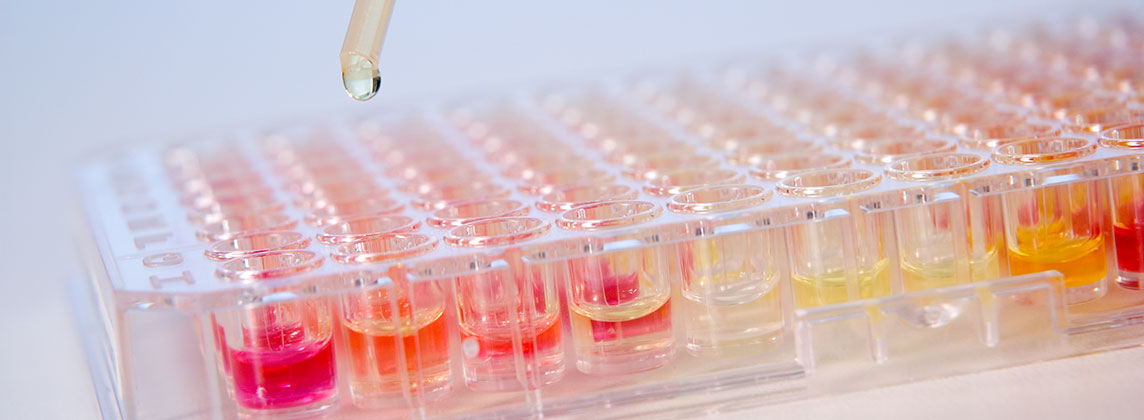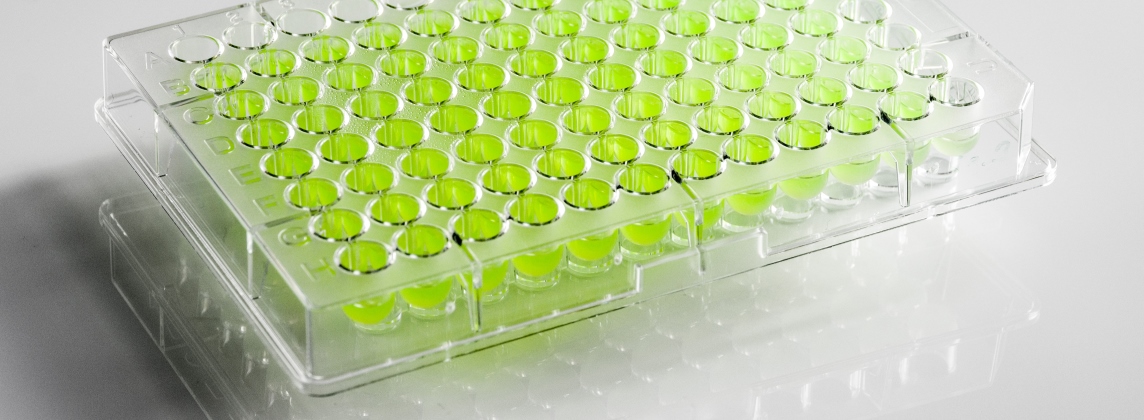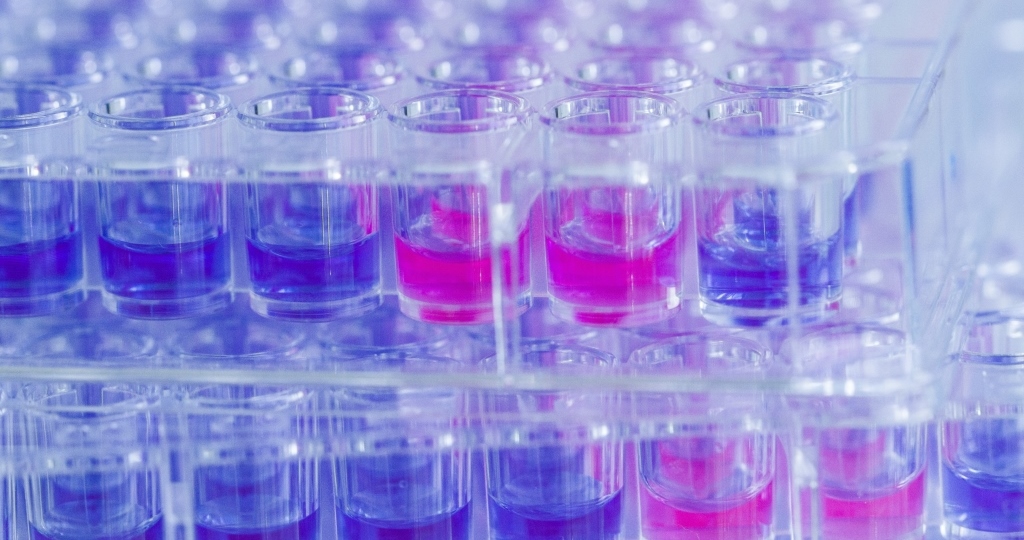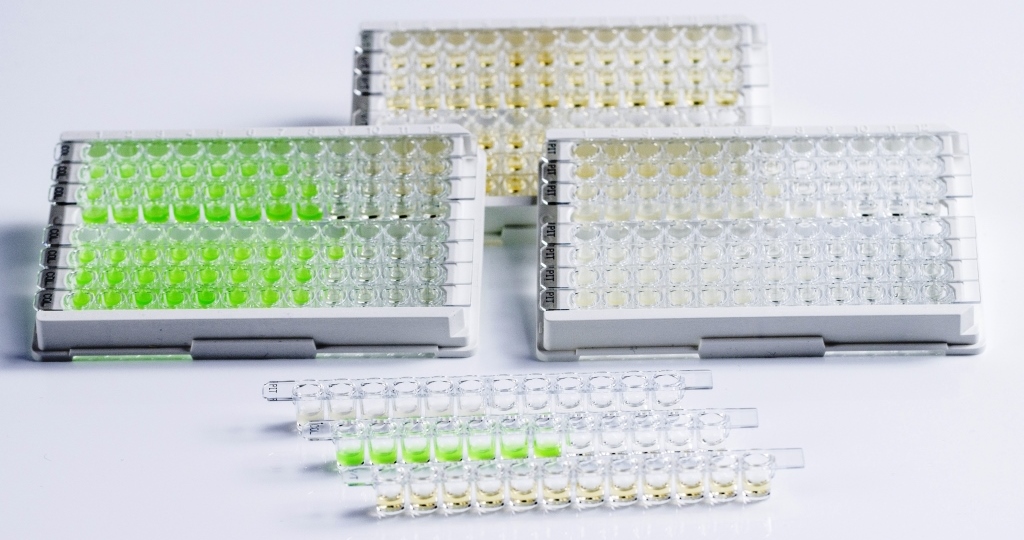Willkommen bei MERLIN, Gesellschaft für mikrobiologische Diagnostika mbH
MERLIN im Überblick
In 3 Minuten wissen Sie mehr:
AKTUELLES
UMIC® Cefiderocol
31.08.2022 | From a drug development perspective, cefiderocol is one of the most promising antibiotics, remaining active even when facing the most challenging carbapenem resistance mechanisms. To support antibiotic stewardship, clinical microbiologists are looking for reliable and accurate cefiderocol MIC testing in full compliance with EUCAST and CLSI standards. Bruker's UMIC® Cefiderocol and the associated iron-depleted Mueller Hinton broth offer an easy to implement solution and can conveniently be tested along with UMIC® Colistin to deliver trusted MIC results when it matters most.
For more information, please visit Bruker's website
Legal Manufacturer Change
From January 2022 the MICRONAUT products have been transferred from MERLIN Gesellschaft fuer mikrobiologische Diagnostika mbH to Bruker Daltonics GmbH & Co. KG as legal manufacturer.
EUCAST warnt vor Gradienten-Testmethode in der Vancomycin MHK-Bestimmung!
21.05.2019 | EUCAST warnt vor der Durchführung der Vancomycin MHK-Bestimmung mittels Gradienten-Testmethode aufgrund der Bestimmung zu sensitiver Vancomycin MHK-Werte.
Für die Bestätigung der vanB low-level Resistenz bei Enterococcus faecalis und Enterococcus faecium empfiehlt EUCAST zur Vancomycin MHK-Bestimmung, bis auf weiteres Produkte basierend auf dem Mikrodilutionsverfahren zu verwenden (siehe hierzu MIC-Strip Vancomycin/Teicoplanin).
Nähere Informationen zur Problematik der EUCAST Resistenzprüfung von Vancomycin
NEU | MICRONAUT-S Carbapenemases Detection
11.09.2018 | Die neue Zwei-Test-Platte MICRONAUT-S Carbapenemases Detection liefert, basierend auf dem Mikrodilutionsverfahren, den phänotypischen Nachweis klinisch relevanter Carbapenemasen (Typ-A Carbapenemasen wie z.B. KPC, Metallo-ß-Laktamasen und OXA-48-like Typ-D Carbapenemasen) in Enterobakterien und Pseudomonas aeruginosa.
- NEU: Phänotypischer Bestätigungstest von OXA-48-like Typ-D Carbapenemasen in Enterobakterien durch die neue Inhibitorkombination Meropenem/Avibactam sowie die Bestimmung der High-Level Temocillin-Resistenz.
- Pro Testplatte ist die Empfindlichkeitsbestimmung von zwei Isolaten möglich.
Das Layout dieser Spezialplatte erhalten Sie gerne auf Anfrage.
Endlich! Mikrobiologische Leistungen im EBM modernisiert
01.07.2018 | Mit Wirkung zum 1. Juli 2018 wurde der Einheitliche Bewertungsmaßstab (EBM) mit einem umfangreichen Paket dem Stand der Wissenschaft angepasst, um die weitere Entwicklung und Ausbreitung von Antibiotika-Resistenzen zu reduzieren. In die Gebührenordnung wurden nun Diagnostika zur zielgerichteten und qualitätsgesicherten Verordnung von Antibiotika aufgenommen:
- Die Aufnahme des massenspektrometrischen Verfahrens MALDI-TOF (MALDI Biotyper) zur Identifizierung von Bakterien und Sprosspilzen
- Die Aufnahme von Leistungen nach den Gebührenordnungspositionen 32772 und 32773 zur antimikrobiellen Empfindlichkeitsprüfung von klinisch relevanten grampositiven und gramnegativen Bakterien gemäß des Regelwerks der EUCAST bzw. CLSI
- Die Aufnahme von zusätzlichen Leistungen nach den Gebührenordnungspositionen 32774 und 32775 zur Durchführung von phänotypischen Bestätigungstests bei Multiresistenz (MDR) wie KPC, MBL, OXA-48 like, MRSA, VRE etc.
Merlin entwickelt und produziert Testsysteme zur antimikrobiellen Empfindlichkeitsprüfung klinisch relevanter Bakterien nach EUCAST bzw. CLSI. Darüber hinaus ist das Unternehmen auf die Fertigung von Testsystemen zur Durchführung von phänotypischen Bestätigungstests bei Multiresistenzen spezialisiert. Mit einem einzigen MICRONAUT Testsystem lassen sich bis zu fünf unterschiedliche Resistenzphänotypen nachweisen. Mit der MERLIN Produktpalette sind die neuen Gebührenordnungspositionen des EBM umfassend anwendbar.
Dr. Esther Pfeil gewählt als Mitglied der IHK Vollversammlung

01.01.2017 | Im Herbst kandidierte Dr. Esther Pfeil, Geschäftsführerin der MERLIN Diagnostika GmbH, bei der Wahl zur Vollversammlung der IHK Bonn/Rhein-Sieg. Seit dem 01.01.2017 vertritt sie nun für fünf Jahre in der Vollversammlung die Interessen des Produzierenden Gewerbes der Industrie im Rhein-Sieg-Kreis. Dr. Pfeil hatte sich zur Wahl aufstellen lassen, "weil ich als Geschäftsführerin eines KMU bewusst Verantwortung für die Stärkung von kleinen und mittleren Unternehmen (KMU) und deren Mitarbeitern in unserer Region übernehmen möchte. Themen, die mich bewegen und die ich bewegen möchte, sind die Steigerung der Marktfähigkeit durch Innovationskraft, die Erweiterung bestehender Ausbildungs- und Weiterbildungsprogramme zur Förderung von Facharbeitskräften und die Vereinbarkeit von Familie und Beruf."
EUCAST Warnung zur Colistin-Empfindlichkeitsprüfung
28.11.2016 | Unsere MICRONAUT-Produkte basierend auf dem Mikrodilutionsverfahren werden von EUCAST zur Colistin-Testung empfohlen!
Nähere Informationen zur Problematik der EUCAST Colistin-Resistenzprüfung
MICRONAUT-UR | Update mit dem neuen Antibiotikum Mecillinam
19.10.2016 | Die Platte MICRONAUT-UR, die in der bakteriologischen Labordiagnostik für die Urologie eingesetzt wird, verfügt ab sofort über ein verbessertes Antibiotikaspektrum. Eingeführt wurde das neue Antibiotikum Mecillinam.
NRW-Fördermittel für das Verbundprojekt "PathoSept"
MERLIN gehört zu den Gewinnern im Leitmarktwettbewerb LifeSciences.NRW
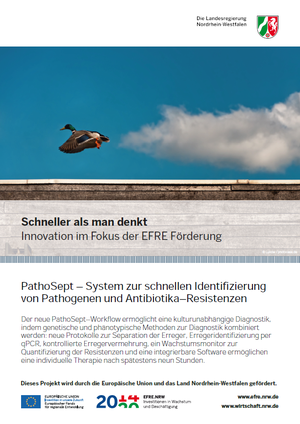
01.08.2016 | Die rheinische MERLIN Diagnostika gehört zu den Gewinnern der 1. Runde im Leitmarktwettbewerb LifeSciences.NRW: Gutachter/innen entschieden für das Verbundprojekt „PathoSept“, das durch schnelle Diagnostik bedrohlicher Infektionen viele Menschenleben retten soll.
Im Leitmarktwettbewerb LifeSciences.NRW wurden aus 51 Wettbewerbsbeiträgen schließlich 10 Verbundvorhaben ausgewählt, die mit insgesamt 19,3 Millionen Euro gefördert werden.
„Gewonnen hat auch unser Projekt 'PathoSept', mit dem wir unter der Koordination des Fraunhofer-Instituts für Angewandte Informationstechnik ein diagnostisches Komplettsystem hervorbringen wollen, das pathogene Erreger lebensbedrohlicher Infektionen sehr schnell identifiziert und parallel eine quantitative Bestimmung des Antibiotika-Resistenzprofils erlaubt, sodass eine gezielte individuelle Antibiotika-Therapie spätestens nach neun Stunden eingeleitet werden kann“, freut sich Dr. Esther Pfeil, Geschäftsführerin der MERLIN Diagnostika.
Neben dem Fraunhofer-Institut und MERLIN gehören außerdem die aus dem Münsterland stammenden Unternehmen Carpegen GmbH und Jüke Systemtechnik GmbH sowie die Unikliniken Aachen und Bonn zum Verbund. Das Volumen dieses Vorhabens beläuft sich auf rund 3,5 Millionen Euro.
Jährlich versterben allein in Deutschland über 56.000 Menschen an einer Sepsis, eine der schwersten bakteriellen Infektionen, die schon durch einen eitrigen Zahn entstehen kann. Derzeit kann die Zeitspanne zwischen Verdachtsdiagnose und zielgerichteter Therapie bis zu fünf Tagen dauern und Infektionen mit multiresistenten Keimen lassen sich nicht adäquat behandeln. PathoSept soll die gesicherte Diagnose schon nach neun Stunden eröffnen und damit die hohe Sterberate, aber vor allem die Neuentstehung und Verbreitung von multiresistenten Erregern signifikant verringern wie auch die intensivmedizinischen Kosten deutlich eindämmen. Damit lässt sich schon im frühen Stadium und sehr spezifisch therapieren:
MERLIN hat für dieses Vorhaben bereits essentielle Vorarbeiten geleistet, weil sie sich auf die Entwicklung, Validierung und Vermarktung diverser mikrobiologischer Diagnostik-Systeme zur qualitativen und quantitativen Erfassung mikrobieller Antibiotika-Resistenzen spezialisiert hat. MERLINs Diagnostiksysteme zur quantitativen Empfindlichkeitsprüfung Bestimmung der erlauben die Bestimmung der minimalen Hemmkonzentration (MHK-Wert) im Einklang mit den normativen Vorgaben. Diese Systeme werden ergänzt durch phänotypische Nachweisverfahren zur Detektion klinisch und epidemiologisch relevanter Resistenzmechanismen. Zudem verfügt MERLIN über hohe Expertise im Umgang mit antimikrobiellen Wirkstoffen, die im Rahmen der Validierung von Herstellung, Verpackung, Lagerung und Anwendung Antibiotika-haltiger Diagnostika zum Einsatz kommen. „Das sind Kernkompetenzen, die einen entscheidenden Beitrag bei der erfolgreichen Umsetzung des Verbundprojekts leisten“, betont Dr. Esther Pfeil.
MERLIN betreibt die Weiterentwicklung seiner Produkte und Prozesse unter Berücksichtigung der Nachhaltigkeit sowie ökologischen und ökonomischen Aspekten mit dem Ziel der Umsetzung des Antibiotic Stewardship zum rationalen Einsatz der Antiinfektiva.

MICRONAUT-S | Erstes AST-Produkt mit den neuen Antibiotika-Kombinationen Ceftazidim/Aivbactam und Ceftolozan/Tazobactam
NEU: MICRONAUT-S MDR MRGN-Screening
24.05.2016 | MICRONAUT-S MDR MRGN-Screening, die aktualisierte MHK-Platte zur Empfindlichkeitsprüfung von multi-resistenten gramnegativen Bakterien (Multi Drug Resistance-Phänotyp) verfügt ab jetzt über ein verbessertes Layout:
- Erweitertes Antibiotikaspektrum durch Einführung der neuen Antibiotika-Kombinationen Ceftazidim/Avibactam und Ceftolozan/Tazobactam
- Erweitertes Antibiotikaspektrum durch Einführung von Meropenem Screening-Konzentrationen für eine verbesserte Detektion von OXA-48-like Type-D Carbapenemasen
MICRONAUT-S MDR MRGN-Screening liefert basierend auf dem Mikrodilutionsverfahren die phänotypische Detektion klinisch relevanter Resistenzmechanismen bei Enterobakterien und Nonfermentern, einschließlich des Nachweises von Cephalosporinasen und Carbapenemasen.
MICRONAUT-S ß-Lactamases | optimierter Nachweis für OXA-48
16.03.2016 | Der phänotypische Nachweis multipler ß-Laktamasen (multipler Resistenzdeterminanten) in einem einzigen Testsystem wurde erweitert:
MICRONAUT-S ß-Lactamases liefert basierend auf dem Mikrodilutionsverfahren den phänotypischen Nachweis zur Detektion klinisch relevanter Cephalosporinasen und Carbapenemasen bei Enterobakterien und Non-fermentern.
- Detektion von OXA-48-like Typ-D Carbapenemasen durch die Bestimmung der High-Level Temocillin-Resistenz
- Detektion von Low-Level Carbapenem-Resistenz durch Einführung der Ertapenem-/ Meropenem-Screening-Konzentrationen
Das Layout dieser Spezialplatten erhalten Sie gern auf Anfrage.

